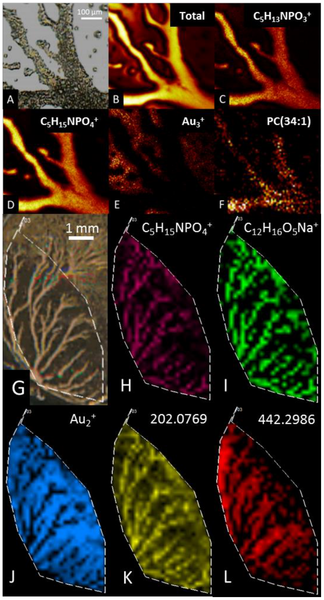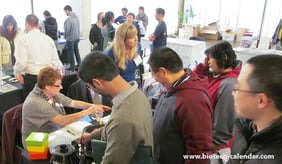The chancellor’s office of Texas A&M University (TAMU) recently funded a $5 million initiative to support mass spectrometry research. As part of this initiative a $1 million grant from the Texas A&M University Research Development Fund will be used to develop a shared mass spectrometry core facility and buy two new mass spectrometers for the College Station campus. One will be a gas chromatography combustion/pyrolysis isotope ratio mass spectrometer and the other will be a high resolution isotope ratio mass spectrometer for clumped isotopes.

Not all atoms of an element are created equally. While they must have the same number of protons in their nucleus, the number of neutrons in their nucleus can vary significantly. This variation affects the atom’s mass. For example, carbon always had 6 protons; however, it can have 6, 7, or 8 neutrons. These would be all be isotopes of carbon and they would have mass numbers of 12, 13, or 14 respectively. Though the difference of one neutron is infinitesimal, it is extremely important to bioresearch.
Mass spectrometers make such exact analysis of samples possible by separating isotopes, molecules, and molecular fragments according to mass. They then plot of the ion signal according the mass-to-charge ratio. This spectra analysis is then used to determine the elemental or isotopic signature of a sample, the masses of particles and of molecules, and to reveal their chemical composition. (Image of Mass Spectrometry Courtesy of Wikimedia Commons)
“This expansion will give Texas A&M University research capacity in stable isotope ratio analysis that is unmatched in the state and region,” Associate Professor Jason West of the Department of Ecosystem Science and Management states in an article for TAMU research news.
This new capacity has been made possible because of the formation of a unique partnership at TAMU. The Stable Isotopes for Biosphere Science Laboratory (SIBS) from the College of Agriculture and Life Sciences has teamed up with the Stable Isotope Geosciences Facility (SIGF) from the College of Geosciences. This collaboration will help researchers offer a new way of predicting petroleum maturation as well as a more cost effective way of exploring and understanding biogeochemical processes.
SIBS will house the compound-specific mass spectrometer. This spectrometer separates and identifies chemical compounds in samples, then measures the stable carbon, nitrogen, oxygen or hydrogen isotope ratios of those compounds. “This system will provide cutting-edge capabilities to utilize individual molecule isotope ratios as fingerprints of biosphere, geosphere, hydrosphere and atmosphere processes,” Dr. West said. He goes on to explain, “Some potential applications include reconstructing past climates from hydrocarbons in soil and sediments, identifying soil microbes and their biogeochemical functions, and unraveling food web structure.”
SIGF will house the clumped isotope mass spectrometer. This one measures the relative abundance of molecules with two rare isotopes. This ratio is being used as a new technique in geothermometry because in carbonate rocks and minerals it is temperature-dependent. Research Assistant Professor Ayumi Hyodo says that reconstructing the precise temperatures at which carbonate rocks and shells were formed will be useful for soil science, geology, and oceanography. She adds that this new instrumentation will also “provide triple oxygen isotope analysis, an emerging tracer for hydrologic and atmospheric research.” Something that is not currently available at any other Texas research institution.
Event at Texas A&M College Station:
On Friday January 27, 2017 Biotechnology Calendar, Inc. will host the 16th annual BioResearch Product Faire™ at Texas A&M University. Life science professionals are invited to attend the upcoming BioResearch product vendor show Come learn how new tools and techniques can assist with the research process. To to attend this on campus trade fai,r pre-register by following/clicking the button below.
This event also gives laboratory product and chemical supply companies the opportunity to meet face to face with active researchers and discuss their research projects and equipment needs. It is a proven opportunity for lab suppliers to display and demonstrate their new products to meet the needs of on campus research programs. To participate click the button below:
|
RELATED ARTICLES: Texas A&M: 3D Printed Bone the Future of Facial Surgery Texas Medical Center Researchers Closer to Cause of Huntington's |



